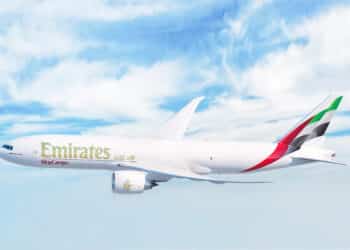Amazon network ramp-up drives a good quarter at ATSG

On an adjusted basis, pre-tax earnings were down 2.4% to $16 million, “reflecting $2.6 million in ramp-up costs stemming primarily from flight crew compensation and training for the expanding Amazon and DHL CMI operations.”
We will return to the Amazon operations, but, as CFO Quint Turner pointed out in a call with financial analysts after release of the results, ATSG is seeing demand from other customers as well. Cargo Aircraft Management (CAM, the company’s leasing division) delivered a 767 300 freighter to Amerijet in July under an eight year lease and expects to lease another 300 to DHL also for eight years starting in September. This bring’s CAM’s 767 freighter leases to DHL to seventeen, and Amerijet leases to five.
Likewise, revenue and earnings from ATSG’s Other Activities segment (which includes the AMES maintenance subsidiary) were up strongly. Revenue up 77.9% to $57 million and earnings up 124.5% to $4 million.
In fact, the one business segment that created a drag on earnings was the company’s original core ACMI business, which reported a loss of $7 million (down from a profit of $1 million in 2Q15) despite a 9.9% increase in revenue to $114 million. ATSG said the reduced earnings stemmed from four factors:
- A $3 .0 million increase in scheduled heavy maintenance
- $2.4 million in higher non-cash pension expense
- $2.6 million in increased personnel costs to ramp up for expanding CMI operations for Amazon
- A one-time $2.0 million benefit from an insurance settlement in the second quarter of 2015
Returning to the Amazon operations: As we pointed out in a post about the first freighter to appear in Amazon’s Prime Air livery, ATSG has been operating 767 freighters for the e-commerce giant for almost a year now – at first in a top-secret test network, and more recently in the public eye – and at the end of the second quarter had eight 767-200Fs flying in Amazon’s network.

This shift will continue as ATSG ramps up to the full twenty-freighter Amazon operation over the next eighteen months. The chart above shows the distribution of ATSG’s fleet at the end of the quarter, and its projected distribution at the end of this year, and at the end of 2017.
If you are interested in learning more about ATSG’s growth from one customer to the diversified operation of today, and its plans for the future (include the recently formed joint venture in China), join us at the Cargo Facts Symposium in Miami 10 – 12 October, where Chief Commercial Officer Rich Corrado will take part in a session on all-cargo airline operation. To register, or for more information, go to CargoFactsSymposium.com.




